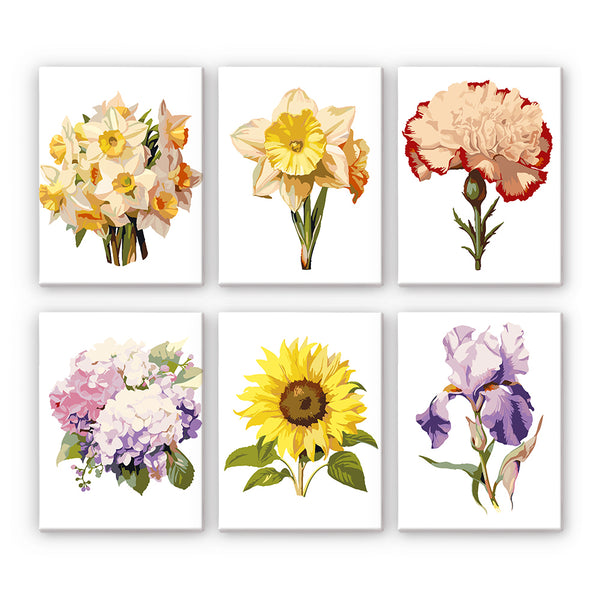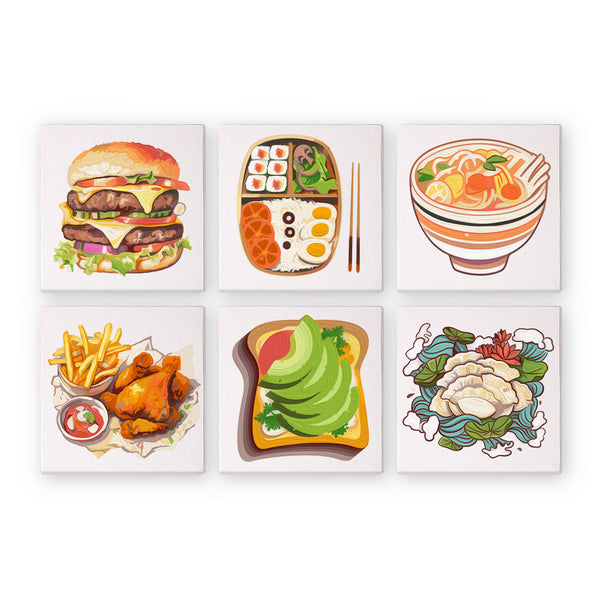The Effects of Different Colors
Colors play an important part in our lives and have both positive and negative effects on us. Our emotions, feelings, and moods are closely linked with the colors that surround us. Since different colors have unique psychological effects, they also have the power to alter our moods, thoughts, and emotions. Colors in movies, advertisements, and fashion are all used to signal certain things without having to speak, influencing viewers profoundly.
Are you wondering about the effects different colors have on you? Explore our overview of color and mood here to learn more!
What is Color Psychology?

There are many different colors that we come across every day, which can make us feel happy, sad, cheerful, relaxed, hungry, and even depressed. All these various emotions that we feel due to changing colors around us are due to several factors, including your cultural upbringing, biological conditioning, and your unique psychology.
Color psychology is basically the study of the effects different colors and hues have on your moods, emotions, feelings, and state of mind. Because colors are such an integral part of our lives, there’s no doubt they’re part of the landscape that affects us. At Canvas by Numbers, we believe that colors and mood are inextricably linked and that scientists have yet to tap the limits of their exploration into this topic.
Recent Studies
There are only a few recent studies that explore colors and mood, and most of them barely scratch the surface. But the radar is slowly shifting towards more acceptance of this unique science and its massive role in the arts, marketing, designing, and life in general. Few ground-breaking observations have been noted about the effects of different colors on our emotional health, and we think it’s time to take it to the next level!
A Subjective Science
Color psychology is mostly subjective, but some aspects are somewhat generalized, including the interpretation of colors. On the one hand, we have subjective colors with meanings dictated by culture or upbringing – like the color white. In Western countries, it’s associated with peace and purity, while in Eastern cultures, it’s a symbol of mourning, so the color and moods associated with it are wildly divergent. However, some colors are universally associated with one specific meaning – the way red is associated with emergencies and warnings.
Color Psychology at Home
Playing with colorful paint by numbers sets is one way for you to learn more about colors, which colors you like, which ones you dislike, and how different colors work together. Once you know how you personally react to colors and how to compose them in terms of art, you can customize your home with decor, paintings, and other accent pieces to ensure you have more power over how you feel in your private spaces.
Warm & Cool Colors
|
|
|
Colors are generally divided into two tones: warm and cool. Warm tones include red, orange, and yellow, along with their many associated shades, like pink. Cool tones include blues, purples, and greens. You might notice that you have certain reactions to paintings and pictures in a specific tone, as there’s a correlation between colors and moods.
Examples in Art
So what are the effects of different colors on your mood? Starry Night by Van Gogh, for example, might encourage feelings of melancholy and contemplation. That’s because, in addition to the subject matter of the painting, the artist also chose to work in cool hues that are associated with tranquility, quiet calm, and even sadness.
On the other end of the spectrum, you might view Klimt’s The Kiss and wonder why it brings about more positive, energetic emotions. This painting is done in shades of yellow and orange, psychologically associated with warmth, comfort, and happiness.
So you see how hanging paintings in certain colors can change your mood?
How Does Each Color Affect You?

While no one color and mood are directly associated with each other 100% of the time, there are some generally accepted color standards used by marketing executives, movie directors, and famous artists to evoke specific reactions. Find out which colors and moods are related here:
White
White is associated with innocence, purity, and peace. It also generally calls to mind a clean slate, encouraging feelings of cleanliness, freshness, and simplicity.
Black
Black absorbs all colors. Generally, black is all about elegance, power, authority, and even menace. Because of funerary traditions in the Western world, black is also associated with mourning, sadness, and death.
Red
A versatile color, red can mean warning and danger, but it’s also the color of the heart and so associated with love, affection, and passion. Some restaurants even use red in combination with yellow to stimulate desire and hunger. Do any food chains come to mind?
Blue
Many famous painters have a blue period when they’re struggling with sadness, trauma, or depression. It’s a low-energy color that could describe negative feelings, as well as serenity. In modern times, blue is also a symbol of security, so many tech companies and protection agencies use it in their logos.
Orange
Similar to red, orange is also a warm color that has vitality and energy. However, it’s modulated with a gentle yellow tone, so the color tends to encourage enthusiasm rather than passion and earnestness instead of seriousness.
Green
A blend of one cool and one warm color, green is often seen as the ideal balance between both sides of the spectrum. Generally used in hospitals and healthcare settings, a pastel version of this color evokes moods of calm, serenity, and tranquility. At the same time, darker shades of green are a little more vivacious – encouraging competition and jealousy.
Adding Color to Your Life
As you explore the effects of different colors in relation to your moods, you’ll start to learn more about your personal associations, indicating which colors you prefer to keep close to you. Then, you can incorporate these preferred colors into your life through your clothing, paintings and decor, and even art therapy!
If you’d like to try your hand at evoking specific moods with color, consider trying out some of our paint by numbers to dip a toe into the artist’s experience!



















